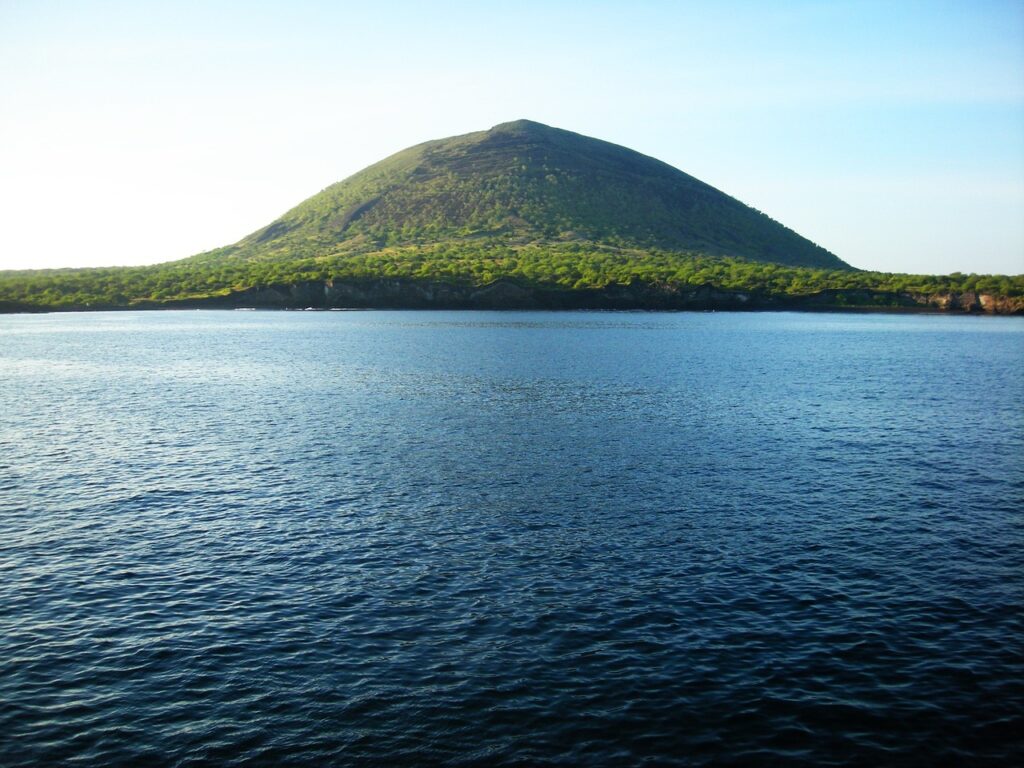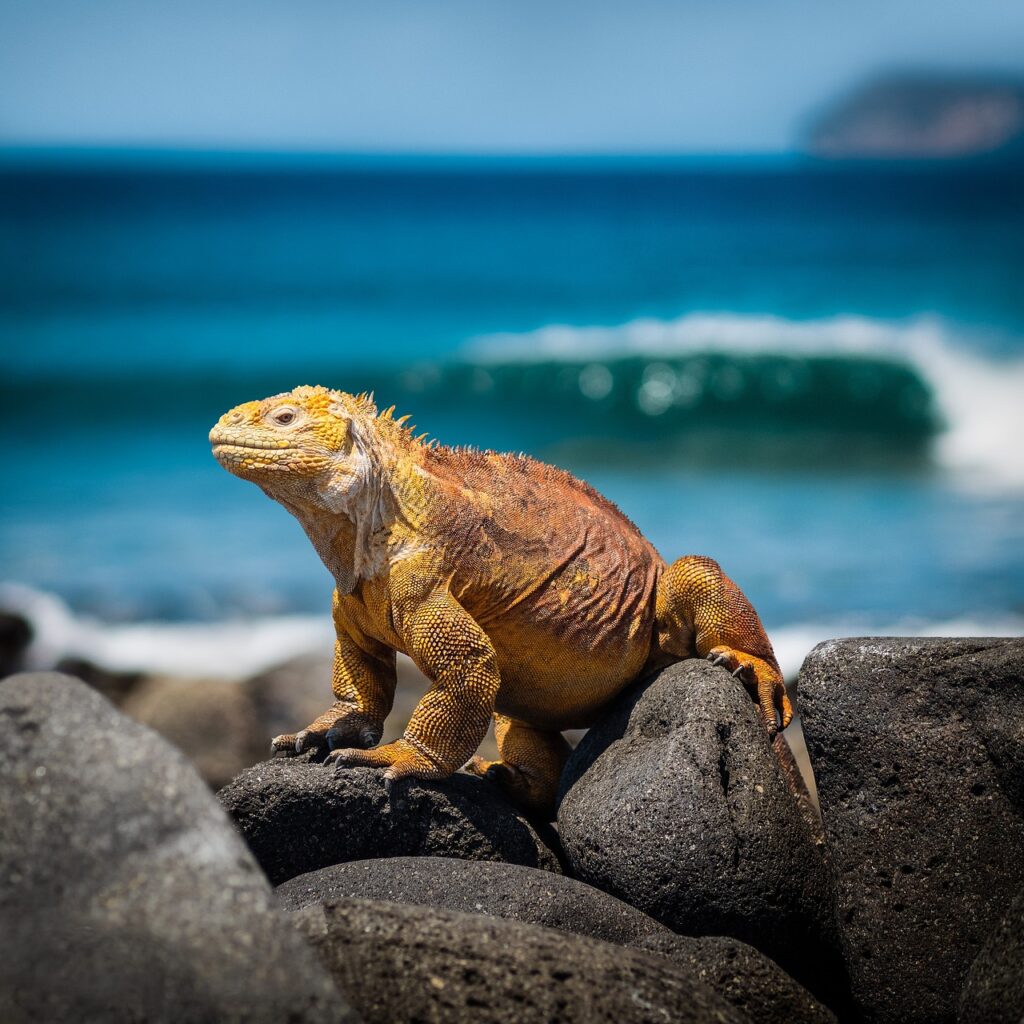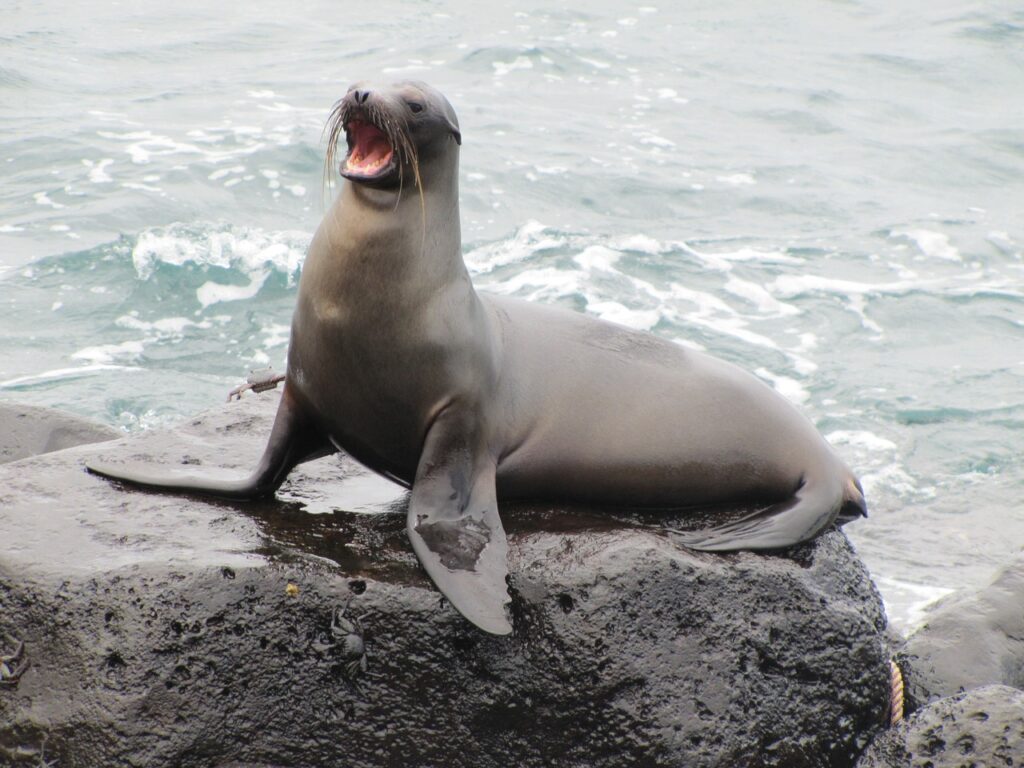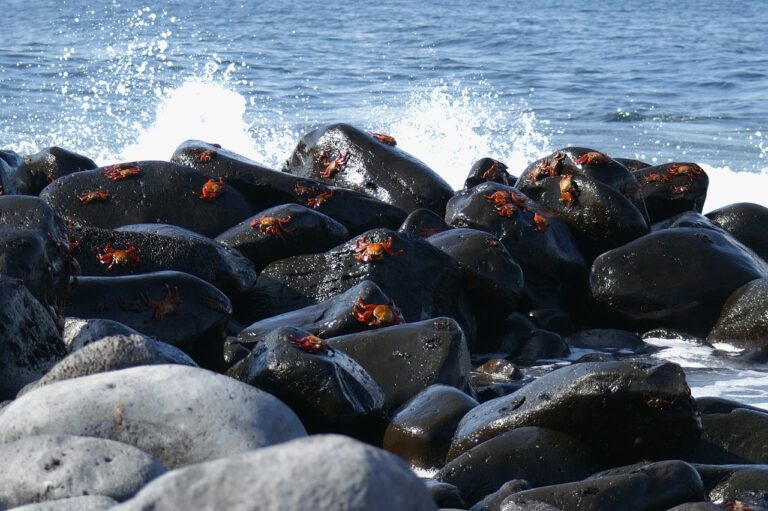Selected solutions for waste management in the Galapagos Islands
The Galapagos Islands, a group of 127 islands and islets located approximately 1,000 kilometres off mainland Ecuador, are home to the largest concentration of endemic plant and animal species on Earth. Darwin’s observations during a visit later informed his theory of evolution through natural selection.
To preserve this open-air biological museum, whose uniqueness made it the first site inscribed on UNESCO’s World Heritage List, 97 percent of its land area was designated as a national park
This remote and unique spot is not without its challenges. One of them is the constant threat of water, air and soil pollution, aggravated by climate change and manifested, among other things, in the accumulation of plastic waste and chemicals. This problem impacts the overall health of ecosystems, affecting both wildlife and human life.
In 2019, Norman Wray, governor of the archipelago at the time, warned: “No matter how many times we clean the coasts, plastic always comes back.” A recent study revealed how much plastic and other human-generated waste is being ingested by the distinctive Galapagos giant tortoises. The analysis underscored the importance of protected areas and other measures to safeguard the iconic and critically endangered species.
This remote and unique spot is not without its challenges. One of them is the constant threat of water, air and soil pollution, aggravated by climate change and manifested, among other things, in the accumulation of plastic waste and chemicals. This problem impacts the overall health of ecosystems, affecting both wildlife and human life.
In 2019, Norman Wray, governor of the archipelago at the time, warned: “No matter how many times we clean the coasts, plastic always comes back.” A recent study revealed how much plastic and other human-generated waste is being ingested by the distinctive Galapagos giant tortoises. The analysis underscored the importance of protected areas and other measures to safeguard the iconic and critically endangered species.
Innovative solutions are being implemented. Here are some of them.
A recent study showed that giant tortoises more frequently consumed garbage produced by human activity in areas occupied by humans, while in protected areas, exposure to this waste was almost nil. Photos: UNDP Ecuador

A toxic relationship
Globally, 54 million tonnes of technological waste is produced annually, equivalent to about 7 kilograms per person per year. Only 17 percent of this waste is recycled.
Many of these objects may contain toxic chemicals known as persistent organic pollutants (POPs). This is the case with the internal foams in refrigerators, batteries and cell phones.
Disused electronics also often contain substances such as lead or mercury and must be disposed of properly at the end of their useful life to prevent detrimental impacts on the environment and human health.
Electronic waste is the fastest growing solid waste stream in the world. If left untreated, it can release toxic pollutants, contaminating the air, soil, dust and water at recycling sites and in neighbouring communities. Photos: UNDP Ecuador (left), Shutterstock (centre and right)
In the Galapagos, given its insular nature, this type of waste was stored exclusively in recycling centres, on islands that had the capacity to do so. Proper management was hampered by a lack of technical expertise and the absence of adequate facilities like those available on the mainland.
This situation took a turn in 2022, when through the initiative of the National Chemicals Management Programme (PNGQ), 35 tonnes of waste that could contain toxic chemicals was collected on the islands of Santa Cruz, San Cristóbal and Isabela.
Through the initiative of the National Chemicals Management Programme (PNGQ), 35 tonnes of potentially toxic waste was collected across three islands of the Galapagos archipelago.

On a visit to Santa Cruz Island, POPs specialist Ángela Quishpe explains that they found “mountains of mattresses and rigid plastics, products that may contain flame retardants,” which can release toxic elements into the environment.
In early 2023, ten large containers safely transported this waste to the mainland for proper disposal or recycling, managed by authorized environmental professionals. The PNGQ is currently focused on formulating a plan to manage such waste on a regular basis, with the main objective of minimizing its environmental impact.
The National Chemicals Management Programme aims to safeguard to the environmental integrity of the Galapagos by putting in place a reliable waste management plan. Photos: UNDP Ecuador
Heat treatment
On the islands of Santa Cruz, Floreana and San Cristóbal alone, more than 95 tonnes of medical waste is generated each year.
This includes syringes, drugs, gloves, vials and more that are produced by health centres, laboratories and research facilities and require specific treatment. An incinerator has been installed on the island of Santa Cruz to handle the materials without the need to transport them to the mainland. The specialized equipment burns the waste, reducing it to inorganic and incombustible matter as well as significantly reducing its volume and weight.
“The incinerator reaches a maximum temperature of 1,300 degrees Celsius, which allows it to burn and completely eliminate all toxic gases, preventing them from going into the soil, water and air,” says Andrés Acosta, the operator in charge of the incinerator. Professionals like him must learn to correctly identify, classify and segregate waste, in addition to addressing regulatory aspects to ensure compliance and safety.
An incinerator on the island of Santa Cruz helps to handle medical waste, including syringes, drugs and gloves. This equipment burns the waste and significantly reduces its volume. Photos: UNDP Ecuador

Container by container
“We do it in the name of the health of the family and the environment,” explains Angel Loor. He, like many other farmers, delivers empty pesticide containers to the stores where they bought them to prevent them releasing pollutants into the environment.
Before 2021, only 5 percent of these containers were recycled in Galapagos. After the launch of the PNGQ and the implementation of the Aliados del Ambiente (Allies of the Environment) initiative, 30 percent of all containers brought to the islands were collected annually.
The Aliados del Ambiente (Allies of the Environment) initiative led to an increase in the collection of pesticide containers, preventing environmental contamination. Photos: UNDP Ecuador
At the same time, work is being done to raise awareness of and committed to environmental care and sustainable development.
This includes a training cycle for farmers, workshops for children and public information campaigns.
The Aliados del Ambiente initiative includes outreach initiatives to farmers and youth across the country. Photos: UNDP Ecuador
Clean agriculture…
Another action is to reduce the use of chemical pesticides and promote more sustainable techniques to prevent pests, such as the use of pheromones installed in containers that act as traps. On the island of San Cristóbal, the use of pesticides has been reduced by almost 50 percent on 63 farms as a result.
The elimination of chemical products has also contributed to improving the quality of the products:
“The smell was impregnated in the plant, which was also stained. Now the product is safer, cleaner and healthier,” says Daniela Cruz, a farmer on San Cristóbal.
A dramatic reduction in the use of pesticides has helped promote and cleaner and healthier environment. Photos: UNDP Ecuador
All the farmers on the 63 farms have completed training led by the PNGQ and the Heifer Ecuador Foundation, which has enabled them to generate 53 percent more income from the sale of their products.
To strengthen food security and sovereignty on the islands and support good agricultural practices, a gas chromatograph has been installed on Santa Cruz to detect pesticide residues in food produced in the archipelago.
A gas chromatograph installed on the Santa Cruz island of the Galapagos, which detects pesticide residue in food, has helped reduce the use of unhealthy chemicals and promote good agricultural practices. Photos: UNDP Ecuador
…with a gender focus
Rural women play a crucial role in the agricultural development of the islands, from production to marketing activities, as well as the sustainable management of resources and waste. In fact, 55 percent of the farms participating in the trainings are led by women.
Their active cooperation contributes significantly to crop diversification, family food security and community resilience.
Upon completion of the training, 50 of these women leaders have been recognized as “Violet Boots”, a UNDP Ecuador initiative that seeks to raise awareness of the importance of gender equality. These women not only advance equity in society but also promote greener agricultural development in the Galapagos.
Ecuador’s rural women play a leading role in the promotion of good agricultural practices. Some 55 percent of the farms participating in the trainings are led by women. Photos: UNDP Ecuador
“I have told my daughters and my sister to empower themselves, not to depend on anyone, that women can do wonders,” says Tania Guamanquishpe, a training assistant and agroecology promoter in the archipelago.
UNDP implements the National Chemicals Management Programme (PNGQ) through the Global Environment Facility (GEF), working jointly with the Ministry of Environment, Water and Ecological Transition (MAATE). The PNGQ is part of the country’s strategy to drive climate action through its nationally determined contributions (NDCs). Globally, UNDP works with countries and partners to advance the sustainable management of chemicals and waste.
Source: UNDP. ORG News
Photos: PIxabay




